Why Asking ‘How Much Rain Will End the Drought?’ Is the Wrong Question
People need to be in the equation too, says Circle of Blue reporter Brett Walton.
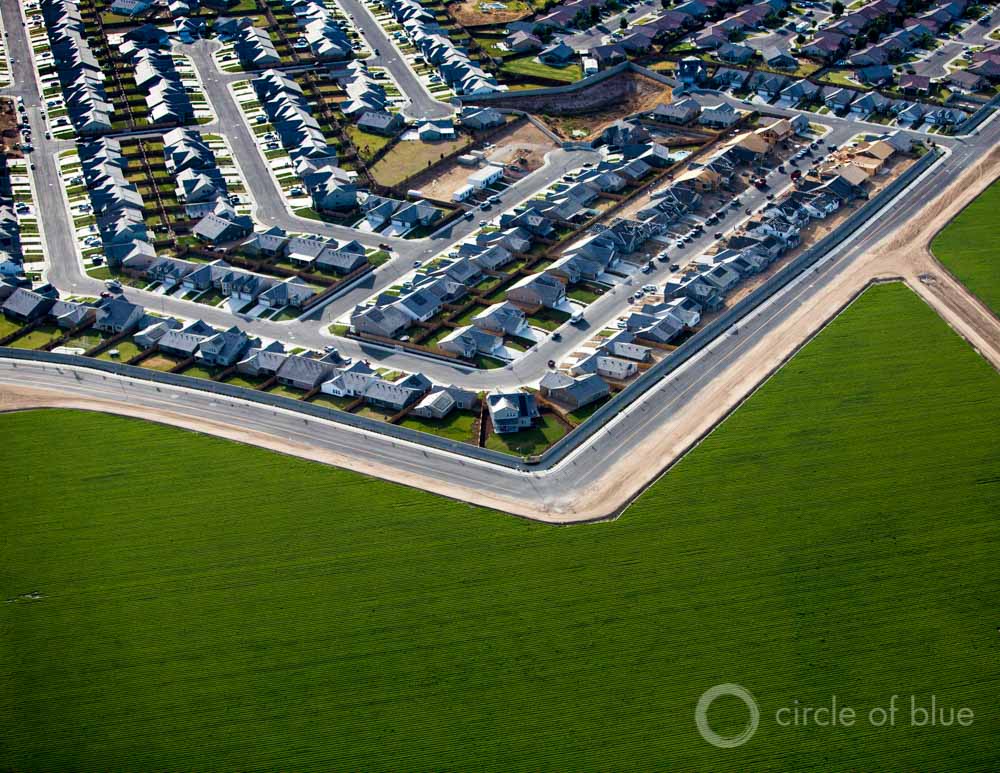
For a society in thrall with performance reviews, business analytics, and the Fitbit, it is an appealing calculation: how much rain will end the California drought?
Like asking how many calories to cut to lose five pounds, the question reflects an American sense of goal setting and stocktaking. Where are we now? Where do we need to be? How do we get there? It is a query in the style of Peter Drucker, father of management theory: we can manage what we can measure.
This question of California’s rain deficit was put to a pair of urban designers last week by a participant in an online Q & A hosted by the technology blog Gizmodo. Hadley and Peter Arnold are the executive directors of the Arid Lands Institute, an urban design institute in Burbank, California, that focuses on adapting the American West to water scarcity.
In response to the question, the Arnolds noted that there is no single way to answer. But they duly attempted a back-of-the-envelope calculation based on a statewide groundwater deficit of 63 trillion gallons that NASA’s GRACE satellites measured between January 2013 and August 2014. California, they reckoned, would need at least eight, maybe nine more storms comparable to the 10-day gusher that soaked the state last December.
Though appealing — the Gizmodo story had been liked 263 times on Facebook at the time of this article publishing — this line of inquiry is incomplete. It minimizes the concept of drought to one variable: supply. Even more, it reduces supply to a single subset: rainfall. As more and more researchers are beginning to realize, understanding drought requires a broader frame. Humans need to be a part of it.
Defining Drought
The Arnolds’ response at least took the answer in the proper direction. Instead of rainfall, they considered the groundwater deficit – how much more water must be added to return the system to the pre-drought balance. By doing so, they introduced a human component (groundwater withdrawals) to the natural component (water that filters into the aquifers via snowmelt and rainfall).
A human component. This, perhaps surprisingly, is a relatively new way of analyzing drought. Researchers for the longest time looked to the sky and to rivers to study drought.
“Drought used to have basically two definitions: precipitation and streamflow,” Michael Dettinger, a U.S. Geological Survey hydrologist, told me last December at the American Geophysical Union conference in San Francisco, where drought was a trendy topic.
That limited view went out the window a few decades ago, but it still clings in some sectors, and, apparently, with the public.
One of the most encompassing definitions of drought that I’ve has come from Kelly Redmond, a climatologist at the Western Regional Climate Center. In a commentary published in 2002 in the Bulletin of the American Meteorological Society, Redmond argued for a broad definition, a definition that transcends drought’s meteorological origins. His pithy assessment: insufficient water to meet needs. Explaining, Redmond wrote:
“Most concepts of drought involve a water balance. This implies that both supply and demand must be considered, as well as the question of whether there is ‘enough’ (and, enough for what?). Thus, through time I have come to favor a simple definition; that is, insufficient water to meet needs. This covers a broad range of situations, from an asteroid to a Pacific Ocean beach, if need be. By intention, it highlights the importance of both the supply and the demand sides of the issue. From this standpoint, a system is ‘in drought’ when supply does not meet demand. Such could occur from diminished supply with relatively constant demand, or from relatively constant supply and increased demand.”
–Kelly Redmond, climatologist at Western Regional Climate Center
Constant supply with increased demand — in other words, a manmade drought. In this scenario, rainfall is not the problem; it is the crowding at the trough. One look at the great river deltas and lakes that have dried up around the world is enough to confirm the problem.
Other scientists have made similar points.
Mark Svoboda, a climatologist at the National Drought Mitigation Center in Lincoln, Nebraska, told me three years ago for a story about the U.S. Drought Monitor, a now-common national drought ranking, that more demand for water increases the severity of dry conditions and heightens the vulnerability of dry regions.
Some of the most interesting current drought research takes this tack.
Anne Van Loon is a hydrologist and lecturer at the University of Birmingham, in England. She is also the chair of a research project called “Drought in the Anthropocene,” which will examine how society influences drought and vice versa — through intensive groundwater use, for instance, or by the spread of urban pavement, which can alter river flows and cut aquifer recharge by putting an asphalt lid on the spongy ground.
“We should take steps to include the human aspects of drought,” Van Loon told me in December. “We can have a drought in a relatively wet situation.”
So rain is one drought variable, but it is not the whole equation. Maybe the new question should be: how much water will we use before we trigger a drought of our own making?
How do you think about drought? Do you see responses that take the human element into consideration? Contact Brett Walton or ping him on Twitter at @waltonwater.
–Brett Walton, reporter
Brett writes about agriculture, energy, infrastructure, and the politics and economics of water in the United States. He also writes the Federal Water Tap, Circle of Blue’s weekly digest of U.S. government water news. He is the winner of two Society of Environmental Journalists reporting awards, one of the top honors in American environmental journalism: first place for explanatory reporting for a series on septic system pollution in the United States(2016) and third place for beat reporting in a small market (2014). He received the Sierra Club’s Distinguished Service Award in 2018. Brett lives in Seattle, where he hikes the mountains and bakes pies. Contact Brett Walton
Leave a Reply
Want to join the discussion?Feel free to contribute!

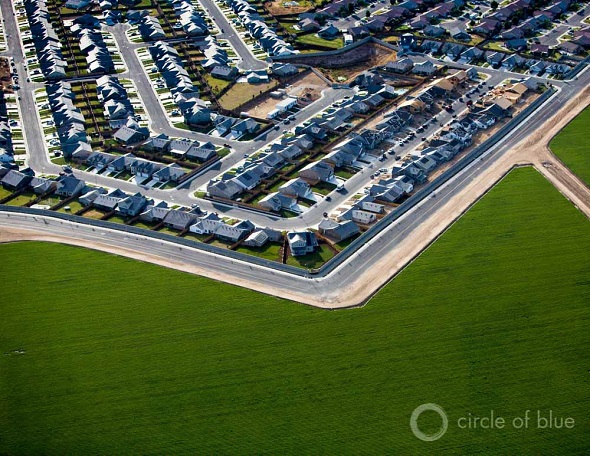

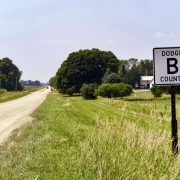
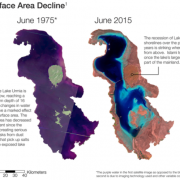
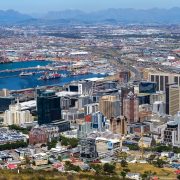




I’m not convinced we should appropriate the term “drought” as recommended and undo established hydrological definitions. Frameworks that consider physical and economic “scarcity” based on combinations of supply-side and demand-side factors are more useful. In fact, “scarcity” is a social construct; a temporally defined “imbalance” of supply and demand is more accurate. Both droughts and rain (if not floods) are inevitable; they do end and we return to “normals”. We cannot control the forces of nature, but we can store water and, of course, manage usage through pricing, standards, and other means.
I also don’t like the idea of redefining a word in terms that are unrelated to the original definition and purpose of a word. The concept of “constant supply with increased demand” just doesn’t fit the fact that drought is a hydrologic phenomenon that expresses itself as a variation from normal within a specific geographic area. The human or natural demand that is impacted by drier conditions may affect the perceived severity of a drought, but it doesn’t define it. A normal year in the southwest USA with no precipitation for four to six months would be perceived as a “drought” in an area that normally gets rain during most months of the year. I don’t think it is possible to come up with a finite definition of “drought” that fits all conditions in all places without destroying the original concept of drought as a changed hydrologic condition. Water scarcity and balance are important elements to adapting to different geographies, changing climate or growing populations and should be evaluated and discussed on their own merits and not by trying to force fit a word that doesn’t fit the circumstances.
See Governing article re the end of a drought: http://www.governing.com/topics/transportation-infrastructure/texas-is-no-longer-in-a-drought.html
Yes, asking “how much rain do we need?” is like the mayor of Atlanta resorting to prayer, rather than understanding the meaning of the drought a few years back, that it was time to understand reality, adapt, and implement conservation and other measures that allow for resilience and seeing water as a commons and public trust in which it must be sustained.
I lived in OC, California. The, (I love my car county.) I went 5 years without going to a carwash. My car’s exterior did not sparkle.
But it was clean. Maybe the carwash joints can shift their business model to advertising how ‘little water’ they use.
Then it’s a win-win.
The customer feels they are helping by going to the carwash business that uses the least amount of water..
The business stays in business and maybe even thrives after implementing an effective change…
Now living in a jumbo city without a car, My health and happiness has greatly increased by pedaling a bicycle everywhere I need to go…
And i wipe my bike down with a cloth…It sparkles from doing so….Especially after riding during a sprinkle…